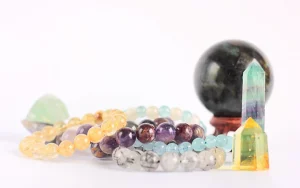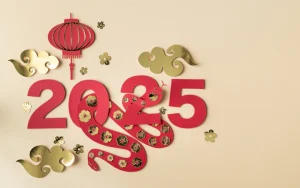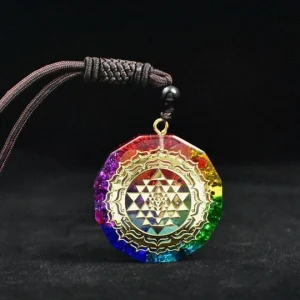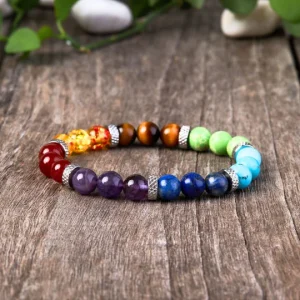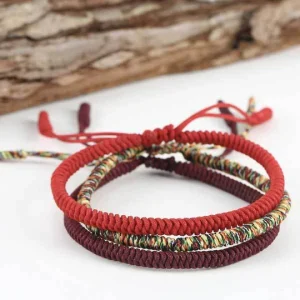
Feng Shui Bracelet: The Ultimate Guide
Yeahpages@163.com
Feng Shui bracelets have been around for quite some time. They promise many good things, such as improving wealth, good health, protection, and stronger relationships when you wear them. And in recent years, it seems like more and more people are getting charmed by these pieces.
But what is the truth about these Feng Shui charm bracelets?
Are they real?
Do they really work?
How can such a piece of jewelry bring in the things you desire most?
In this guide, we’ll take a deeper look at the wonders of these Chinese lucky bracelets. Discover the Feng Shui bracelet meaning, benefits, and how they work to improve your life. Also, unlock the Feng Shui bracelet rules so you can get the most out of your charms.
Dive into the empowering world of Feng Shui bracelets and find out the answers to the most asked questions about these pieces!
What is a Feng Shui Bracelet?
A Feng Shui bracelet is worn to activate good Feng Shui energy in the body.
In Feng Shui, it is believed that the universe is made up of various energies (Chi or Qi) that influence our experiences in life. Each aspect of human life, such as wealth, health, and relationships, has its own type of energy.
If you wish to improve one aspect of your life, you have to attract the right energy for your intention.
Wearing a Feng Shui bracelet helps align your energy with the vibrations of your goals.
In simpler terms, Feng Shui charm bracelets are your trusted companions in manifesting your intentions.
Feng Shui Bracelet Meaning
Feng Shui bracelets are a type of Feng Sui enhancers that are consciously made to align with the energy of the world and bring its wearer harmony. Feng Shui bracelets make use of Chinese and Feng Shui principles, to attracts good luck, wealth, and great fortune.
There are various Feng Shui bracelets available, with the black obsidian Pixiu bracelet being the most famous and most powerful one.
History of Feng Shui Bracelets
Feng Shui bracelets are deeply intertwined with the ancient Chinese practice of Feng Shui, which focuses on harmonizing individuals with their surrounding environment through the thoughtful arrangement of space and use of specific objects. Here’s a detailed look at the history and development of these spiritual accessories:
Origins in Ancient China
The roots of Feng Shui date back over 3,000 years and are linked to Taoism. Feng Shui, meaning “wind and water,” is based on the understanding that the land is alive and filled with Chi, or life force. The practice originally focused on the orientation of spiritual sites and structures in ways that would harmonize spiritual energies. It was utilized by emperors and the elite to optimize prosperity, health, and authority through the strategic placement of buildings, tombs, and other structures.
Emergence of Feng Shui Bracelets
Feng Shui bracelets emerged as tools that apply the same principles of spatial harmony to personal energy. These bracelets are designed to affect the body’s spiritual and physical wellbeing by influencing the flow of Chi. Traditionally, they include elements that correspond to different aspects of life and Feng Shui principles, such as specific colors associated with particular energies or life aspirations (wealth, health, love, etc.), and materials like crystals, wood, and metals that are believed to interact with body energies.
Cultural Evolution and Symbolism
Over centuries, these bracelets have evolved in design and symbolism. Each element of a Feng Shui bracelet—from the color and material to the addition of symbolic figures like dragons, coins, or the Bagua—has a specific purpose. For instance, red is often used for its associations with luck and protection, while jade is a common stone due to its properties of purity and the harmonious balance it is believed to create.
Popularization in the West
The popularization of Feng Shui in Western cultures during the late 20th century brought with it a heightened interest in Feng Shui bracelets. As the practice was adapted to Western contexts, these bracelets transitioned from being esoteric items used mainly by practitioners and believers in Feng Shui to becoming fashionable and widely recognized symbols of wellness and spirituality.
Join our list of over 60,000 blessed individuals!
Be part of our empowered community and gain access to our weekly tips, latest product launches, and exclusive sales that will help you attract luck, wealth, healing, and protection.
- Share
- Share
- Pin it
You may also like
Hand-Picked Items Just For You collection
-
Products Name
Attract Wealth$150.00Original price was: $150.00.$120.00Current price is: $120.00.Rated 0 out of 5

